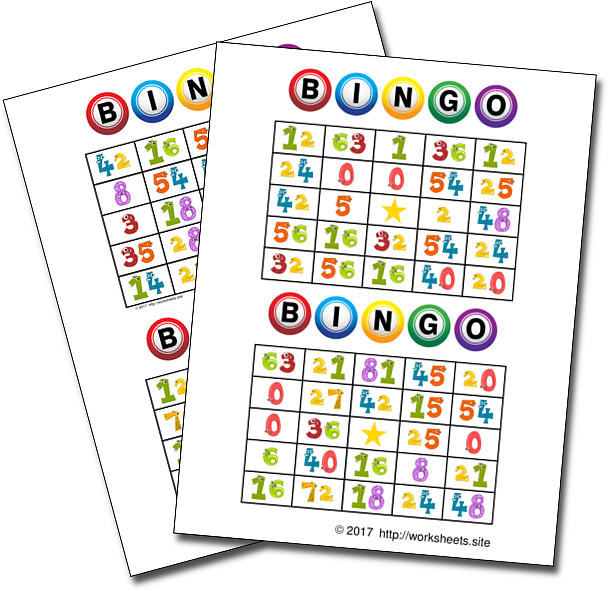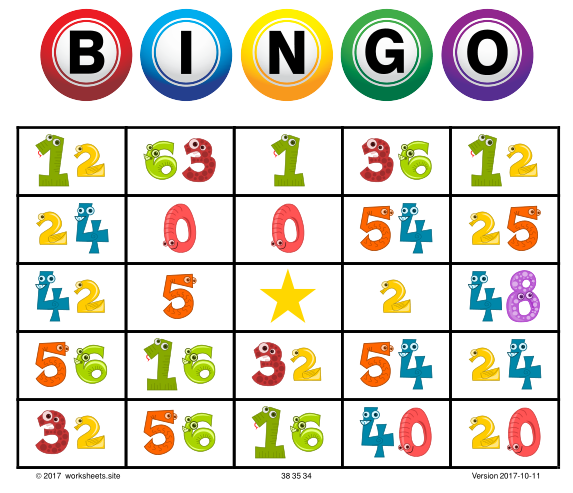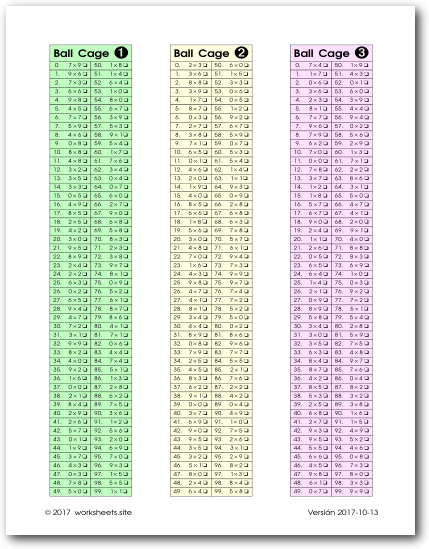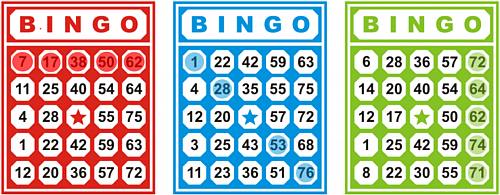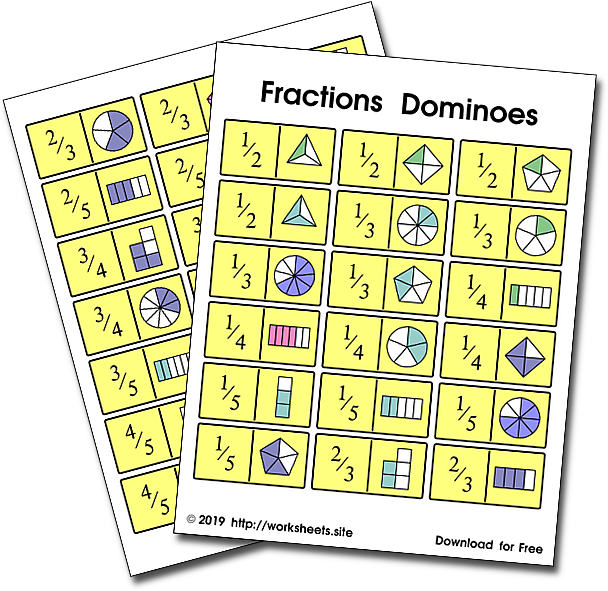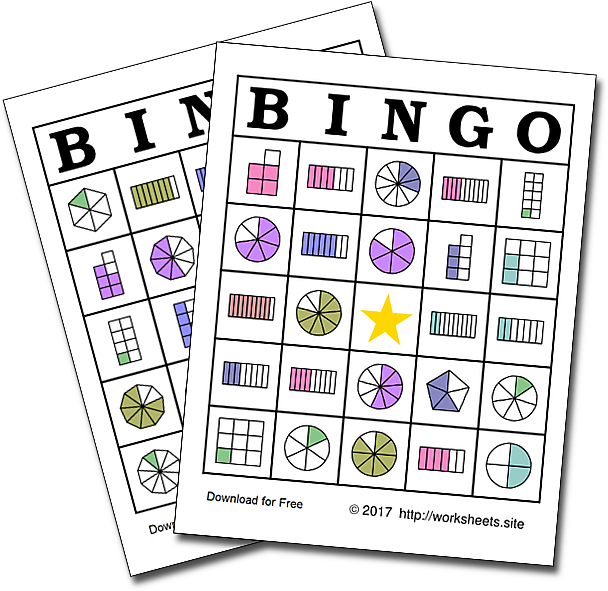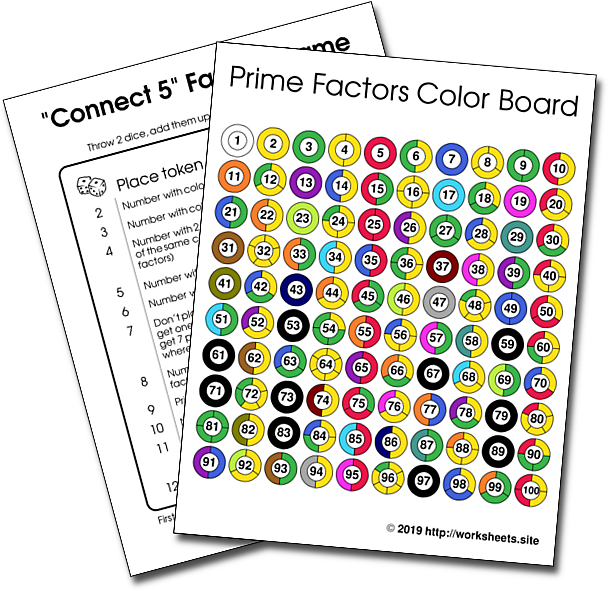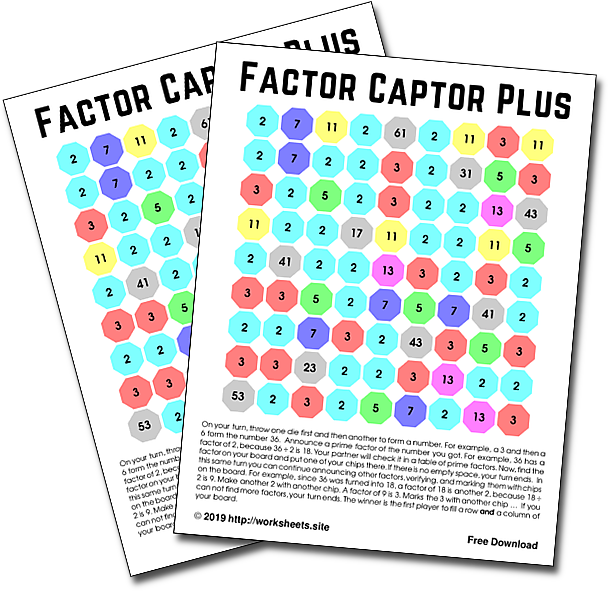Printable Multiplication Bingo Cards
How to make a multiplication bingo? Math can and should be enjoyable... even fun sometimes. A bingo math game favors learning math. Kids will love this exciting experience. Works great for large groups of kids or a whole math class.
1. How to Play Multiplication Bingo
Bingo Multiplication can be played in the classroom or at home. You can start in a very simple way. Once the bingo cards have been downloaded and printed, you can consider laminating them so you can use them again and again, or use them only once if you prefer. You can also use them multiple times using beans or pebbles instead of marking off the numbers.
- Each player is given a bingo card with random numbers.
- Decide who the multiplication bingo caller will be. The caller is responsible for calling the bingo questions and is not a player in the game. The person most likely to be the caller is the teacher or the parent.
- The caller must remind everyone that the central space of the cards, the one marked with a star is free, and everyone should mark it.
- The caller chooses a list of prepared multiplication operations that replaces the number cage in the traditional game.
- The multiplication bingo caller reads one operation at a time and checks it off from the Bingo caller card. Then the caller allows players to mark one of the numbers on the card if the answer matches. For example, if the called operation is "4 x 4" then players could mark the number 16 in their tables. The same number can be marked if the called operation is "2 x 8".
- If the answer of the called operation does not match one of the options on the cards, the player will not mark any number on the card.
- The game continues until someone has marks along a row of your card, along a column of your card, or along a diagonal.
- The first player to score one of these patterns stands up and shouts "BINGO!"
- After a player has declared himself the winner, the caller checks the BINGO card to make sure that the player has actually marked the answers that respond to the operations that were called. If all the answers are correct, there will be congratulations.
- If you want to have more than one winner, the game continues. This is a way to have multiple winners. While the first winner waits for the next game, the others continue to play.
- Many teachers and parents realize the potential of playing bingo to help their children see that math is fun and interesting. Some schools have already begun math clubs competing against other schools.
- So if you're looking for fun math activities for kids, you'll see that in a bingo game with math is a good and very inexpensive way to make kids' minds work with math.
- This printable Bingo card pdf is perfect for playing bingo and learning the times tables. It consists of 48 Multiplication Bingo cards, two cards per sheet.
2. Preparation and Materials
- Print the Bingo Cards
![[PDF Document]](innards/pdf.png) . Use the password worksheets.site to open the PDF file.
. Use the password worksheets.site to open the PDF file. - Cut the playing cards splitting the printed pages in two.
- Ask each child to choose one bingo card.
- Print the Multiplication tables calling cards
![[PDF Document]](innards/pdf.png) that replace the balls cage in the traditional game. You will find all the multiplication operations like 7 x 5, 3 x 2 or 0 x 0. These specific sequences of operations were designed to delay the attainment of the bingo pattern for all the bingo cards. With a truely random selection of operations it is possible and frequent that the game ends too quickly.
that replace the balls cage in the traditional game. You will find all the multiplication operations like 7 x 5, 3 x 2 or 0 x 0. These specific sequences of operations were designed to delay the attainment of the bingo pattern for all the bingo cards. With a truely random selection of operations it is possible and frequent that the game ends too quickly. - Select the bingo cage/list you will use.
- Call each operation. Children should solve the multiplication mentally, then try to find the value on their cards. The child can only cross out the called number once, no matter how many times it is repeated on the cardboard.
- When the child has the answer on his / her sheet, he / she marks it with an X or places a token on the correct box.
- The first player to have five correct answers is the winner.
- The three numbers under each card represent the earliest turn that particular card has a bingo pattern if the 1st, 2nd, or 3rd calling lists are used respectively. This allows teachers and parents to quickly check whether it is possible for the child to have completed the card.
